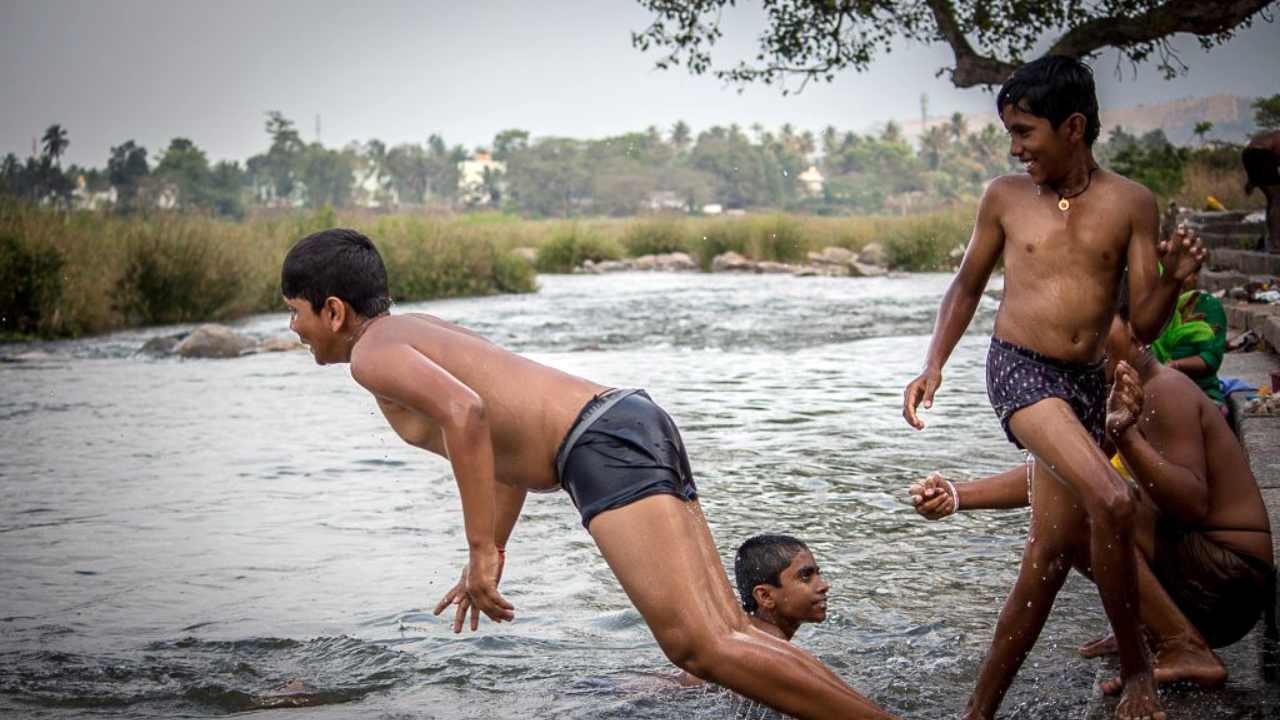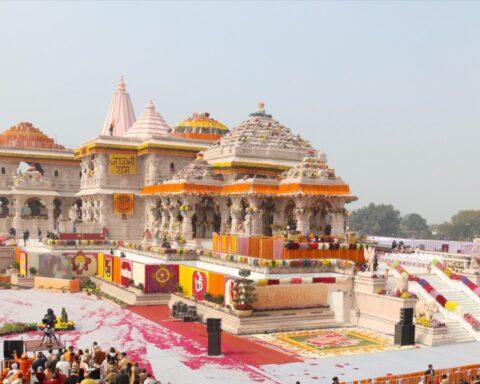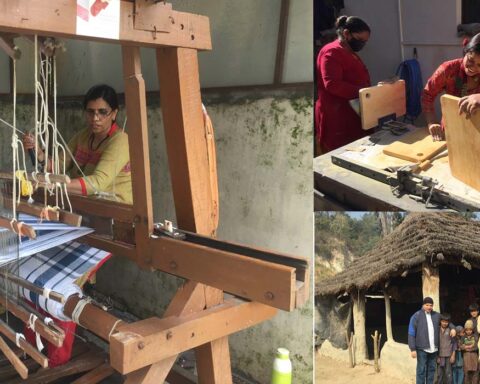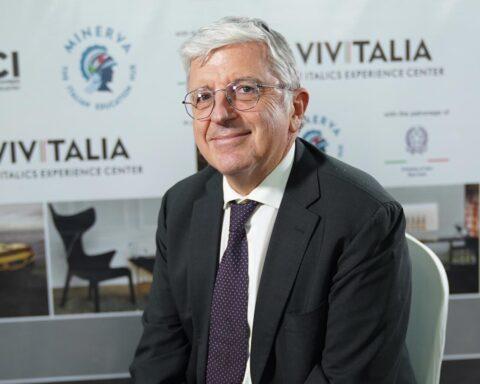The summer season of 2022 has begun with the highest average maximum temperature ever recorded over Northwest and Central India in the past 122 years–35.9 degrees Celsius and 37.78 degrees, respectively. While sharing the data, the Met Department also cautioned about the possibility of temperature soaring beyond 50°C in parts of Rajasthan in May.
The biggest challenge for India right now, rising temperatures are putting lives and livelihoods in danger. The South Asian country that is most vulnerable to productivity losses, especially in agricultural and/or construction employment is India, cautioned the International Labour Organisation (ILO) in a 2019 study. The report added that due to heat stress, India–losing 4.3 per cent of working hours in 1995–may lose 5.8 per cent of working hours in 2030.
The extreme heat in the Indian subcontinent, especially in India and Pakistan, is now an important subject of study by various United Nations agencies like ILO and the World Meteorological Organization (WMO).
While India has witnessed many heatwaves in past decades, their recurrence and resulting mortality pushed government agencies and research organisations develop city-specific action plans to mitigate the impact. While chairing a high-level meeting to review heat wave management and monsoon preparedness, Prime Minister Narendra Modi encouraged states and union territories to act before it is too late. Officials have been asked to regularly audit the fire safety measures of hospitals and reduce the vulnerability of forests against fire hazards.
Narendra Modi had experienced the impact of a heat wave up and close during his tenure as Gujarat Chief Minister. The summer of 2010 had witnessed temperatures as high as 46.8°C in Ahmedabad, Gujarat’s capital, which led to an estimated death toll of 1,300 in a month. The city officially recorded 100 neonatal deaths in a single hospital.
The recurrent heat waves in the western Indian city led to India’s first dedicated heat action plan (HAP). The plan was developed in 2013 by the scientists of the National Research Development Corporation (NRDC), the Indian Institute of Public Health, Gandhinagar, and the India Meteorological Department, apart from Amdavad Municipal Corporation officials. The plan was specifically tailored for Ahmedabad. Today, the Centre, its departments and agencies, and other stakeholders are working with 23 heat wave-prone states and over 130 districts to develop such plans.
What is Heat Action Plan?
Developed as an administrative tool, a HAP defines different levels of heat emergency for the city and lists activities for plan participants for each level. It incorporates the best practices from other plans and builds a robust community outreach campaign.
Under consistent development, the plan in Ahmedabad incorporated a cool roofs initiative into its 2017 Heat Action Plan. The initiative provides access to affordable cool roofs for the city’s slum residents and urban poor, i.e., those who are most vulnerable to the health effects of extreme heat. The initiative aimed at turning the roofs of at least 500 slum dwellings into cool roofs, improving the reflectivity of roofs on government buildings and schools, and raising public awareness (Kaur, 2017).
A HAP primarily includes early warning systems, colour-coded temperature alerts, staggered or reduced timings for schools and factories, community outreach programmes, and capacity building of human resources, primarily government and health professionals, to prepare and reduce exposure. Ahmedabad too issues alerts, like orange (very hot) if the temperature was over 40°C and red (extremely hot) if it is over 45°C, and messages to people to take precautions and avoid stepping out if not absolutely necessary and hospitals to be ready to receive heat stroke cases.
It makes sense for India to invest in these plans, as more and more of its cities are being added to the list of cities struggling with the problem. Global weather monitoring website, El Dorado said that out of the 15 hottest cities in the world in May 2020, 10 were in India, and the rest were in neighbouring Pakistan.
For many Indians and Pakistanis, particularly in rural areas, the intolerable heat cuts down the work hours outdoors. The Lancet reported said that the three most populous countries in the medium UN-defined human development index (HDI) group, i.e., Pakistan, Bangladesh and India, witnessed the greatest losses among this group (2·5-3 times the world average and the equivalent to 216-261 hours lost per employed person) in 2020 due to heat exposure.
Tailor-Made City Solutions
With most Indian cities turning into heat islands in April itself, there are announcements on evading its ill effects with timely actions. The bottom line of these actions is to reduce people’s exposure to heat and supply shade and water for those out of homes and offices.
The schools in Delhi-NCR are restricting timings, outdoor activities and stocking ORS and glucose sachets and but also motivating children to stay hydrated. Haryana too changed its school timings from 7 am to noon for all classes due to heat waves. Odisha has installed a mist cooling system at Sambalpur Junction station to beat the gruelling summer heat. Maharashtra plans to modify market hours, provide public shelters, sprinkle mist in public places and keep ice bags at public health centres, says a Reuters report, quoting the National Disaster Management Authority (NDMA) website.
The NDMA not only lists down points to keep in mind for individuals but also links to action plans of various states. The tips to survive a heatwave include keeping cool by bathing feet in cold water and drinking water even when not thirsty.
In addition to immediate steps, the planners advise following long-term measures such as planting more trees, rainwater harvesting, building shelter for traffic police and using green nets for shade in market areas. Researchers say that greening cities in high rainfall areas can offset stronger heat waves.
HAPs Focus on the Vulnerable
The governments are trying to give high-risk communities access to timely and appropriate information and resources that can help them stay safer. A suite of actions that reduce heat exposure, build communities’ capacity to respond to heat events, support local climate adaptation planning and implementation, and advance heat illness prevention standards for indoor and outdoor workers are being launched.
Steps are also being taken to protect critical energy, transportation and other infrastructure, support heat-resilient communities through relevant regulations and codes, and scale weatherisation and cooling technologies. Providing strategic shade and regulating the temperature of buildings and surfaces during extreme heat events are other measures.
Impact on Lives and Livelihoods
Extreme heat has multiple and cascading impacts not just on human health, but also on ecosystems, agriculture, water and energy supplies and key sectors of the economy, says the UN weather agency. All these impacts restrict our lives further with deterioration of air quality, power blackouts and rising electricity demand.
In an article on the serious health impacts of heat waves, the Centre for Science and Environment (CSE) accounts for the reported 3,775 deaths in 2015-19 due to heat-related illnesses. The National Centre for Disease Control data said, the effects of the heatwave are also felt indoors, as extreme heat can lead to thermal discomfort inside buildings. Indoor heat can lead to adverse impacts on sleep, blood pressure, respiratory and cardiovascular diseases, mental health and cases of pregnancy-related complications, confirms the World Health Organization’s Housing and Health Guidelines.
A Side-Effect of Urbanisation
Not a tropical climate issue, the “heat island effect” marring cities is mainly because of urbanisation. Planners blame the problem on the way we plan and design our cities.
Rampant construction, concretisation and shrinking of green spaces and water bodies in cities together have led to the trapping of heat. Concrete and steel not only absorb and retain heat but also fail to soak up and store rain.
Soon, the heating leads to over air-conditioning in urban spaces, causing a surge in electricity demand. The new buildings must prevent energy lock-in and the old structures must be retrofitted to survive the heat and reduce power consumption.
In its article, CSE points out that the Centre’s new affordable housing projects even fail to comply with the latest energy code. “A CSE assessment of several affordable housing plans and projects in different climate zones shows that none of them meets the heat gain requirements (defined by residential envelope transmittance value – RETV) as per the Eco Niwas Samhita (ENS),” says the environment body, adding that no Indian state has yet adopted the ENS.
Rampant use of climate-inappropriate building materials, due to a lack of studies on the subject, is another gap. The CSE investigation has revealed that more than one-third of the projects sampled are using monolithic wall panels made of concrete – this material gets heated up more than twice as fast as a conventional burnt clay brick wall. No regulation of layouts and design from a cooling perspective is the next shortcoming of government housing projects.
All of these issues have been addressed under the India Cooling Action Plan (ICAP), released in 2019 by the Ministry of Environment, Forest and Climate Change. The plan says, by 2038, a significant percentage of households in India would be living in thermally uncomfortable buildings due to bad design.
Solutions Experts Advise
- Urban greening: It stands for making more space for trees and other vegetation amidst the concrete stretch. The concept can potentially help mitigate heat-related mortality and flooding facing the over 4 billion urban population worldwide, says a Cardiff University study. Carpeting roofs and walls with greenery and building green corridors between park spaces may also help.
- Greener homes: Homes built with limestone and other natural materials absorb moisture during humidity and release it through evaporation on hot and sunny days. This provides a slight cooling effect, says Amin Al-Habaibeh, a professor of intelligent engineering systems at England’s Nottingham Trent University. The expert, quoting a 2015 article based on a report that studied the ways builders helped keep people cool for centuries in the Persian Gulf, a region with a history of heat. The sandy texture and colour of the buildings also reflect a lot of solar radiation, it adds.
- Narrow roads and alleys: Another architectural idea from the Persian Gulf was to have slender avenues, as these maximise shadows. Here, the use of glass is rare and windows are small to uphold air and restrict heat. Internal courtyards funnel hot air upwards during the day and replace it with cooler air from the surrounding rooms, said the report.
- Stay hydrated: Back home, experts advise people to stay hydrated to balance the water lost through sweat during dry summer months. One is encouraged to drink more often, even when one does not feel thirsty. An important duty is to check whether someone needs extra help. The NDMA website gives easy-to-follow tips to sail through the heat wave.
- Focus on the vulnerable: Look out for the elderly, children, pregnant women and those with medical conditions, as these groups are all more vulnerable to heat. Everyone must avoid being in direct sunlight between 12 pm and 3 pm when the sun is at its strongest.

























